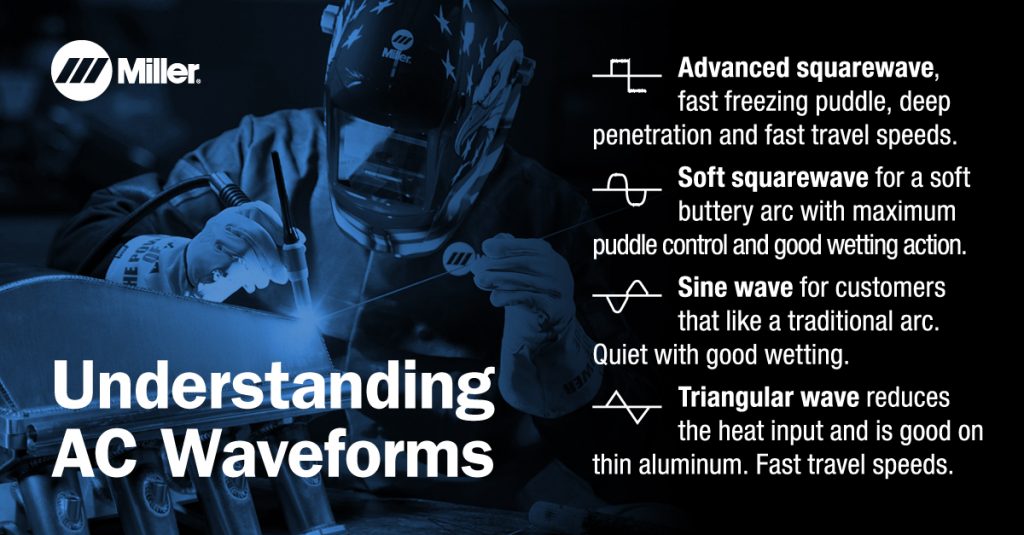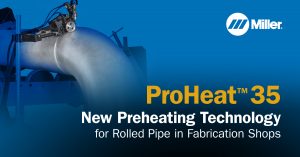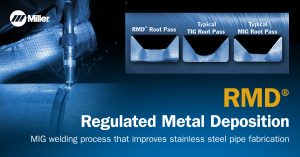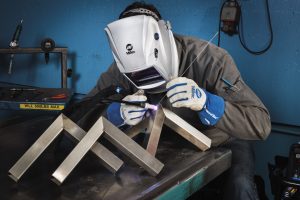In AC mode, an inverter offers waveform shaping with more control for optimal results. We’ll take a look at some of the benefits behind these waveforms.
Some inverters bring control over the waveform itself to meet a specific requirement or operator preference. Some of the waveforms include:
- Advanced Squarewave, which gives fast transitions for a responsive, dynamic and focused arc for better directional control.
- Soft Squarewave, which provides a smoother, softer arc with a more fluid puddle than the squarewave.
- Sine wave, which gives the soft-arc feel of a conventional power source, while using square transitions to eliminate the need for continuous HF.
- Triangular wave, which combines the effect of peak amperage while reducing overall heat input. Leads to quick puddle formation and, because of lowered heat input, reduced weld distortion, especially on thin material.
Achieving maximum productivity often depends on the inverter’s ability to produce a weld bead profile and characteristics that meet the application needs without over-welding, under-welding, excessive post-welding grinding or weld repair. In critical or high-volume applications, only advanced AC controls provide this benefit.
"With the Dynasty [an inverter based AC/DC TIG power source by Miller Electric], you can weld much quicker," says Derek Grundler, production manager of A1A Dock Products, Hollywood, Florida. "And when you strike an arc, it draws a puddle at least twice as fast as conventional TIG."
John Doe Tweet
Grundler found that the inverter-based TIG source increased production by 18 percent, provided a payback time of two weeks per machine and improved weld bead consistency. Neal Vesco of Vesco Metal Craft, leading manufacturer of rugby wheelchairs, found production increased by approximately 30% by switching to an inverter based TIG power source, finding the triangular wave especially useful on thin aluminum. Both Grundler and Vesco also noted an improvement in bead appearance.
"We only have a 1/8-in. (3 mm) white line (etched zone) around the weld," says Grundler. Describing how the new system eliminated post-weld cleanup requirements and protected the aluminum finish. "With conventional TIG, no matter what you do, you're going to get a 1/4-in. (6 mm) white line around the weld."
John Doe Tweet
In Understanding Advanced Inverter and Waveform Controls series you can read about:
Inverter-based TIG machines such as the Dynasty® 210 TIG welder feature advanced controls that allow welding operators to choose from four different waveforms: triangular wave, sinusoidal wave, soft square wave and advanced square wave. In this video, Andy Weyenberg, motorsports marketing manager at Miller, demonstrates how to access the hidden menu and select the waveform that suits your application.




